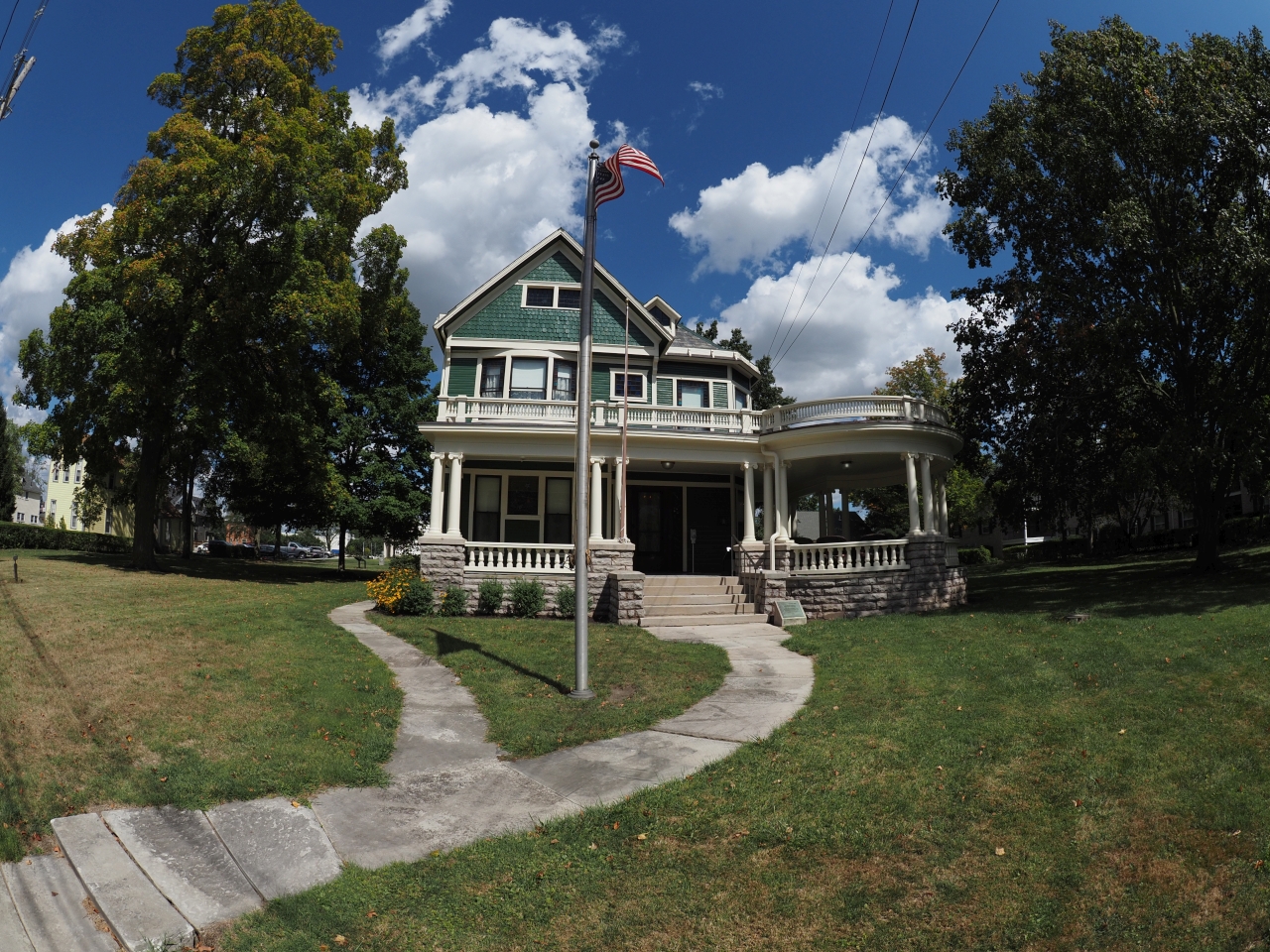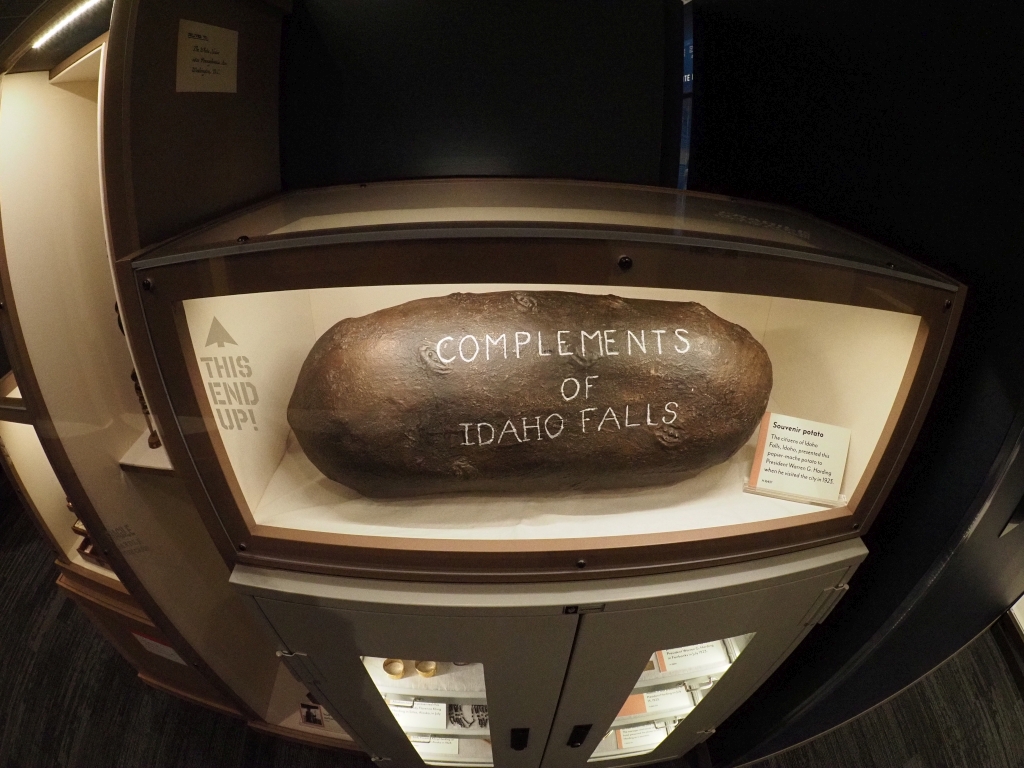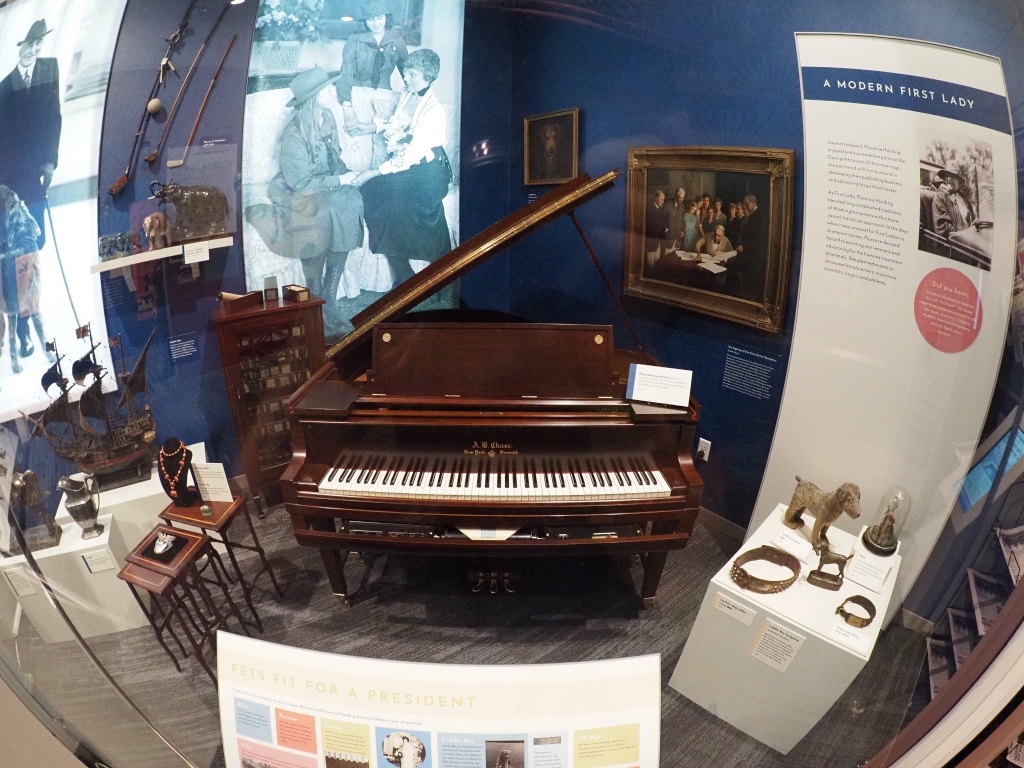Return to Normalcy, or A Visit To The Warren G. Harding Home
✍️ • 🕑 • Series: Go West, Young Lad • Tags: presidential sites • museums • Ohio • Warren G. Harding • Places: Warren G. Harding Home

Warren G. Harding is perhaps the least well-remembered 20th Century U.S. President. He passed away two years into his first term in office. An initial outpouring of grief and beatification was soon quelled by news of the administrations’ scandals.
Harding’s reputation was tarnished forever by his associates’ embezzling, his impotent responses, and his sexual affairs, which included fathering an illegitimate child, and are somehow still fodder for late night television jokes today. Harding’s tomb was not even dedicated by a U.S. president until five years after it was built, once President Hoover fell from popular esteem due to his poor handling of the Great Depression.
If there’s one place on the planet where Harding isn’t merely remembered, but remembered with fondness, though, it’s his hometown of Marion, Ohio.
This is where you can visit his former home, his presidential museum and library, and also his tomb. The gift shop even sells expensive, limited edition prints of Warren & First Lady Florence Harding’s portraits, and presumably there’s a market for them. A tour of the house was actually fairly popular on a random Wednesday afternoon in September.
So how could I not want to pay it a visit?
The Museum
Fun fact: Warren G. Harding played in town bands in his youth and used to brag that he played every instrument but the E-flat cornet.
I got to the Harding Presidential Sites at around quarter to twelve. When I purchased my ticket, I was disappointed to find that tour ran hourly, except at noon, meaning that I would have to hang around until 1PM to tour Harding’s home. I opted to do so.
The museum presents a revisionist take on Harding. Here, the narrative eventually touches upon his scandals, but does so almost as an afterthought to his accomplishments, unlike many narratives which do the opposite.
It begins by emphasizing his humble roots and eventual rise to prominence in local politics, after he successfully bought the local Republican newspaper, the Marion Daily Star, and turned it from a failing business into a thriving one.

His affability and desire to listen to multiple viewpoints helped catapult him from being a one-term senator to a surprise presidential nominee.
The museum frames Harding as an effective leader, who was less conservative and more pragmatic. He was willing to side with his party on issues with which he personally disagreed, such as temperance, in order to meet the will of the electorate.
Harding’s election was also the first after women achieved suffrage, and his wife, a divorcee, certainly helped his campaign by being able to speak to… women’s issues.
Bolstered by the easygoing charisma of his famous “Return to Normalcy” speech, and a McKinley-inspired front porch campaign, he would win the election in a landslide, with the largest popular-vote percentage margin besides the years when James Monroe ran unopposed.
As the museum frames it, his promised “Return to Normalcy” was not an isolationist conservative denial of recent upheavals such as World War I, but a forward-looking framework for rebuilding the nation.
He began his presidency with popularity, and… tax cuts. His appointees included luminaries like Herbert Hoover and Andrew Mellon, but also many associates from Ohio. (Later derided as “the Ohio Gang.”)
During his tenure, the Federal Highway Act was passed helping to expand America’s roadways. At the behest of then-Labor Secretary Herbert Hoover, Harding organized a meeting to initiate an eight hour workday among steel workers, who had previously worked 12 hour days.
Harding instantiated quotas for immigrants, pardoned imprisoned Socialist politician and presidential candidate Eugene V. Debs, and appointed some supreme court justices.
Harding was the first sitting President to visit Alaska, dying an early death from heart disease shortly thereafter, prompting mass grieving across the nation.

Shortly thereafter, the proverbial shit hit the fan, when news of various unethical behavior from many Harding appointees, though not Harding himself became widespread, most notably the Teapot Dome scandal. For acesssors of presidential excellence, though, the case of Charles R. Forbes was most damaging for Harding’s ranking.
Charles R. Forbes was in charge of the Veterans’ Bureau. He used his post to embezzle millions of dollars, and illegally sell medical supplies. Harding found out and accepted his resignation, but did not press any charges, wishing to avoid a scandal during his administration. His cowardice and unwillingness to seek justice in this incident helped cement his poor reputation in the eyes of historians.
After absorbing this information, alongside vintage video clips, and nice displays of Harding’s former work desks, I quickly ran to Taco Bell for a pre-tour snack, before I met on his famous porch to tour his famous house.
Harding’s Home
Note: no photography is allowed inside the home.
Harding’s home is a thing of beauty. Warren and Florence designed the home together a year before their marriage, so it is a one of a kind. Although it was constructed in 1890, most of the rooms and furnishings strike me as very 1920s. It’s beautifully maintained, mostly impeccably furnished, and chock full of memorable little details.
The house is electrified, except the kitchen which looks like something out of the 1890s with its big cast iron stove. Doubtless it was a hot and unpleasant place to work, especially during the campaign.
Take for example, the drawing room. When a painter came by to take Harding’s portrait, he asked if the artist could also please paint a portrait of his dog. Guess which one is hanging in the living room? Hint, it says “woof woof.”
Or, how about the dining room. In many historic houses, the table is set with artificial food to show what the occupants enjoyed eating. In Harding’s house, the table was set with waffles, topped with chipped beef and gravy. (Combine that with his penchant for smoking cigars, cigarettes, and a pipe, along with his love of chewing tobacco, and is it any wonder he died an early death?)
Another favorite historic object of mine was a quilt upstairs that had been gifted to Harding by politically active women. They sewed their signatures into it, pledging to vote for Harding in the upcoming election.
If you tour the home, you’ll get to stand on the front porch where Harding conducted his presidential campaign, inviting out-of-towners to visit him in Marion, which teemed with guests. There he refused to use amplification, but did insist on mingling with the crowd, letting them experience his easygoing charisma first hand.
You’ll also get to see the drawing room where Warren and Florence were married. (Florence’s father frowned upon their marriage, and even threatened to shoot Harding at the courthouse.) Florence was superstitious and insisted on getting married on the first half of the hour, as marked by their lovely grandfather clock. (Florence’s mother snuck in to watch the ceremony herself.)
And, you’ll also get to see numerous drawing rooms, where the busy and popular Harding only had time to meet with “the movers and the shakers.” (If I had a nickel every time the tour guide mentioned something about Harding hobnobbing with movers and shakers… it would have paid for Taco Bell.)
Don’t worry. In addition to Harding’s affable popularity and genius vision, you do get to hear about his infatuation with his neighbor’s wife on the tour too.
And, although mistress Nan Britton’s account was ghost-written and historically inaccurate, the DNA tests came back a hundred years later. The child was Harding’s. (A fact also shared at the end of the tour.)
There lies the contradiction. For all of Harding’s quirks, good looks, love of waffles, stolen Alaska gold nugget dog collars, and unwavering support for his Ohio hometown, I can’t really say that many of his “accomplishments” required having Warren in the Oval Office. I cannot say I am convinced that a “return to normalcy” constituted a bold vision for the future.
But I can say his home is a fantastic example of style and architecture, and the tour was an absolute treat. And it was so lovely to pretend that Warren was an unsung hero of the nation, even if but for an hour or two.
This post was part of a series:
Thanks for reading!
If you enjoyed this post, you might enjoy these 5 similar posts:
- 2021-01-29 —755 Votes
- 2020-11-09 —James Buchanan's Birthplace
- 2024-04-30 —James Buchanan's Wheatland - Visiting the Monticello of America's Least Well-Remembered President
- 2023-01-05 —Three Books on Haida Gwaii
- 2021-12-10 —Dune It Up! Visiting Mt. Baldy